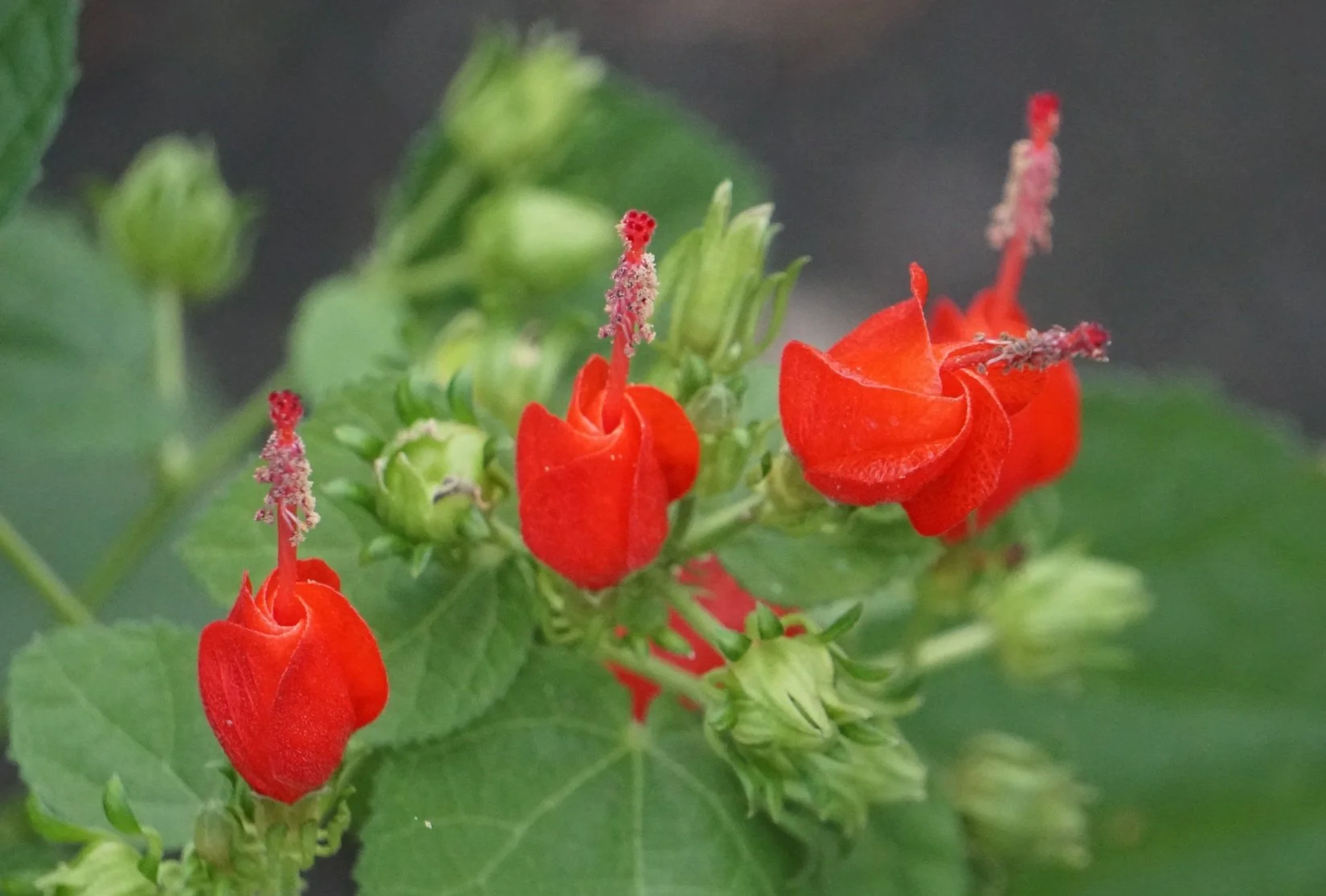Species Profile: Turk’s Cap
Common Name: Turk’s Cap (also known as Mexican Apple, Wax Mallow)
Scientific Name: Malvaviscus arboreus var. drummondii
Location: Native to Central, South, and East Texas, commonly found in woodlands, shaded gardens, and along fencerows. Thrives in partial to full shade and tolerates a wide range of soil types.
Mating Habits: Reproduces by seed and vegetatively through spreading roots. Pollinated primarily by hummingbirds, but also by butterflies and bees attracted to its nectar-rich flowers.
Seasonal Habits / Bloom Time: Blooms from late spring through fall (May to November), with peak flowering during the heat of summer when few other shade plants bloom.
Ecological Relevance: An important nectar source for hummingbirds during the summer and early fall. Its flowers are uniquely adapted for hummingbird pollination, and its berries provide food for birds and small mammals.
Interesting Facts:
Flowers remain partially closed, resembling a Turkish turban, which inspired its common name.
Produces small, edible red fruits that are sweet and apple-like.
Exceptionally drought- and heat-tolerant once established.
Wildlife Associations: Highly attractive to hummingbirds, especially Black-chinned and Ruby-throated during migration. Also visited by butterflies like the Gulf Fritillary and native bees.
Conservation Note: A low-maintenance, versatile native plant ideal for shady pollinator gardens. Works well in wildlife-friendly landscapes and helps sustain pollinator populations during the hot Texas summer.

